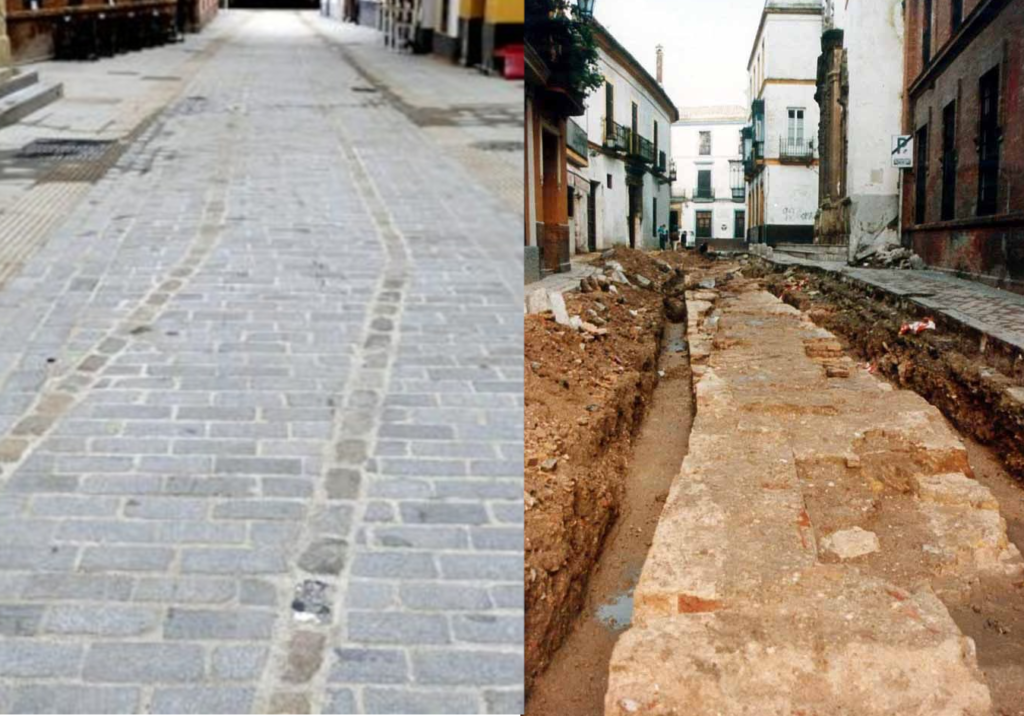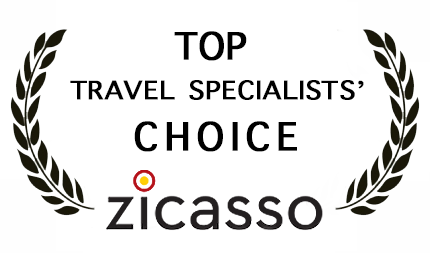
The Santa Cruz Section is one of the most touristic neighborhoods of Seville.
A few weeks ago and after several months of work to peatonalize the street Mateos Gago the City Council of Seville has celebrated the reopening of this street and has encouraged the Sevillians to stroll through the streets of the Santa Cruz Section to enjoy their city and at the same time contribute to revitalizing the economy of the many shpos and bars in the area.
Taking advantage of the break because of the works in the street and the absence of tourism during the pandemic, the Giralda Bar, a classic Sevillian tapas bar, has been refurbished, and the remains of an old Haman, or Islamic bath, have been restored.Another interesting surprise that the re-urbanization of Mateos Gago Street has given us is the discovery of the existence under the pavement of part of the wall that delimited the old Jewish quarter of Seville before the year 1391 and that was excavated in its entirety in 1991 by Mr. Ignacio Rodríguez Tremillo.
When walking along Mateos Gago Street, at the height of the current Santa Cruz Parish Church, former church of the Convent of the Holy Spirit, we can see highlighted on the new pavement the layout and width of the old fence.
The old Jewish quarter
The Jews arrived in the peninsula in Roman times and officially remained here until their expulsion by the Catholic Monarchs in 1492.
Under the Roman, Visigoth and Arab dominations, the Jews lived in the peninsula in relative tranquility. In fact, the Caliphate period in Al Andalus is considered an example of coexistence and tolerance between Muslims, Jews and Christians.
However, upon the arrival of the Almohads to the peninsula, they expelled all non-Muslims from the Islamic territory. Jews and Christians have to leave the territory of Al Andalus and go to Castilla.
It will be after the conquest of Seville in 1248 when the Jewish community returns to Seville and settles in the neighborhood next to the Alcazar. King Ferdinand III arrives in Seville accompanied by a group of Toledo Jews who have an important role in the Court and have the royal protection, which is why they will settle near the monarch, who will give the Jewish community 3 mosques to be transformed into synagogues.
After the attack to the Jewish quarter in 1391 and especially after the expulsion of the Jews, these old mosques transformed into synagogues became Christian parishes.
Where were these synagogues located?
One was located where the parish of San Bartolomé is today.
The second corresponds to the current parish of Santa María la Blanca, where even today we can still see the original door of the synagogue on the side facing Archeros Street.
And the third was the Parish of Santa Cruz in its original location, that is, in the place now occupied by the Plaza de Santa Cruz. The church was demolished by the French during the occupation in the 19th century to create the open space, i.e. the square we know today. Despite the eagerness of the French to find the remains of the great Sevillian painter Bartolomé Esteban Murillo, who was a neighbor of this parish and was buried here after his death, his remains were never found. Today we can see a plaque dedicated to his memory on the facade of one of the buildings surrounding the square.
It t is estimated that the old Jewish quarter, at its best, reached an area of 16 hectares, although what is now known and visited as the Jewish quarter, the Santa Cruz Section, has a much smaller area.
The Santa Cruz Section was restored and embellished on the occasion of the Ibero-American Exhibition of 1929 and it is a real pleasure to stroll through its streets and squares.
From Showmesevilla we suggest a walk through the Barrio de Santa Cruz to learn about its history and legends








No comments yet.